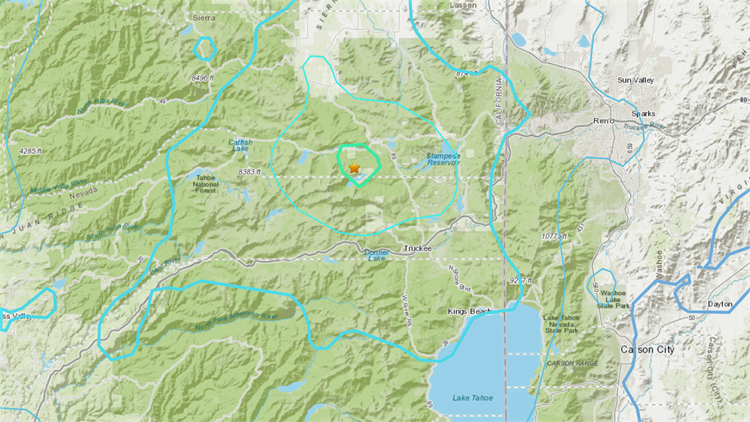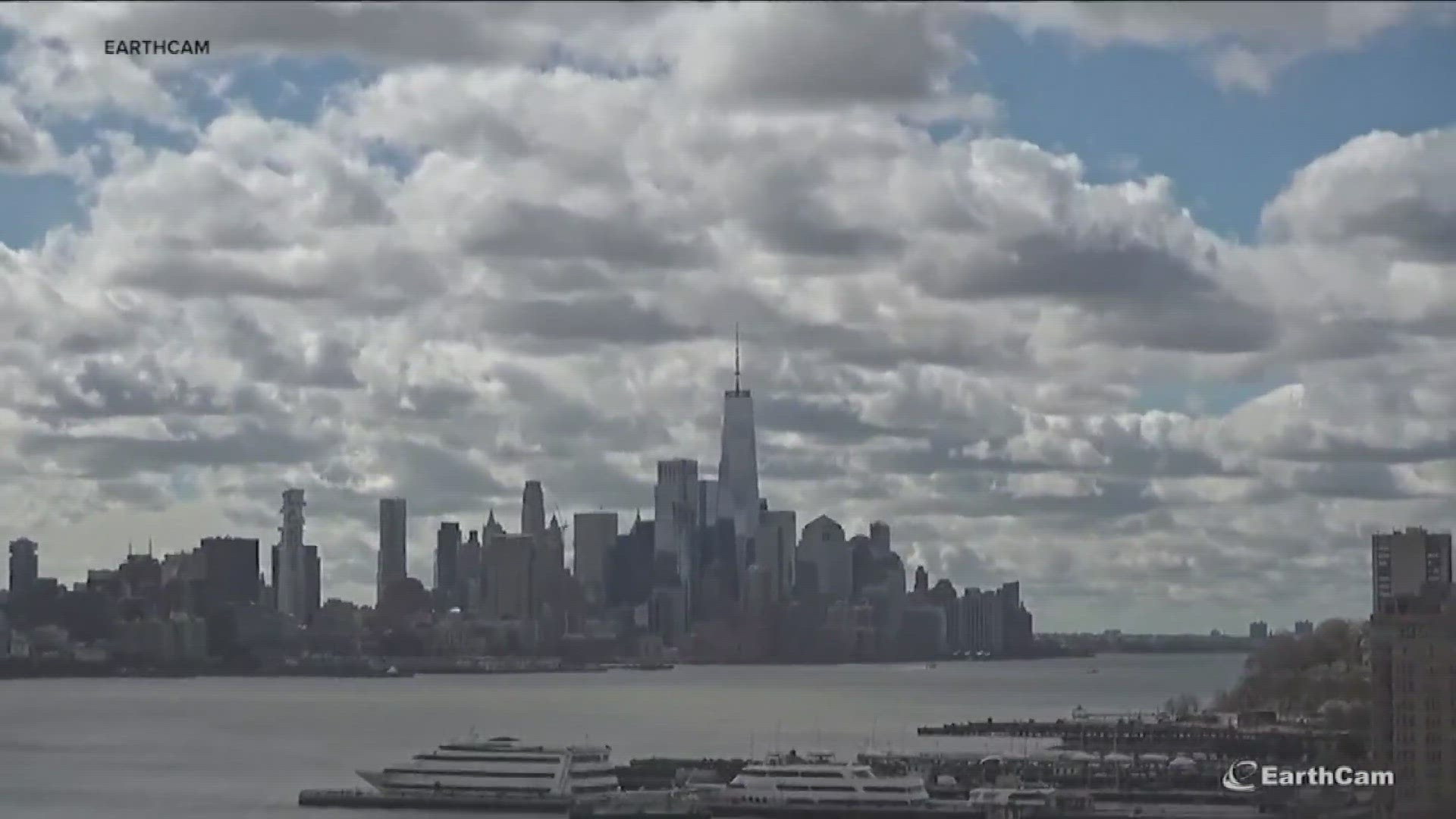SACRAMENTO, Calif. — Residents all over Northern California were rattled by an earthquake recorded in the Truckee area Thursday night. The 4.7 magnitude temblor left some people asking questions about the quake, the area it occurred, and what to expect next.
The epicenter of the earthquake was about eight miles northwest of Truckee and 26 miles west southwest of Reno, according to the United States Geological Survey (USGS). The initial quake was followed by a few smaller aftershocks.
ABC10 spoke with Acting State Geologist and head of the California State Geological Survey, Steven Bohlen, to get answers about the Truckee quake. Here is what he had to say:
Question: On what fault line did the Truckee earthquake occur?
Bohlen: “The earthquake occurred about 10 kilometers south of a northwest-trending fault zone called the ‘Mohawk Fault Zone’ in an area that’s quite interesting. It’s been termed by the University of Nevada – Reno as the ‘Truckee Fault Zone.’
It’s a series of faults that appear to connect the western edge of the great basin that has predominantly strike-slip faults with the Tahoe basin that has predominantly normal faults. So it’s a complicated zone of many fault strands.”
Q: Is the earthquake that happened in the Truckee Fault Zone a common occurrence or is it rare?
Bohlen: “Earthquakes of this size are known to occur there. I would not call them rare and I would not call them common. They happen from time to time and I think what’s important to know is that the [May 6] earthquake…and the earthquake of a few weeks ago in the center of Lake Tahoe are probably not related. The style of faulting is different. They’re on different fault strands or fault zones. The ‘Dollar Fault Zone’ is for the Tahoe earthquake.
But they do happen and the fault zones on which these events occurred are known to have these kinds of events from time to time. But they are also known to have large events that are obviously more rare.”
Q: You said there could be larger earthquakes at the Truckee Fault Zone, do you know how much larger they could be there, or have larger earthquakes already been recorded there in the past?
Bohlen: “There are larger ones recorded there in the past – sort of magnitude 6.5 to 7. We don’t talk in terms of ‘is an area due for an earthquake.’ The Earth is a fickle beast and Mother Nature will uncork an earthquake when she feels like it. But it’s very wise to have a plan.
We live in California. It’s a seismically active state. Everyone should have an earthquake plan that involves everything from first aid kits and water and flashlights and food and things like that to be prepared in case services go out. But also how you connect with your family if cell phone service is out. Everyone in this state should have that plan because a good-size earthquake can occur just about any place in this state at any time.”
Q: Has there been any increased seismic activity in this area or in California in general lately?
Bohlen: “No. What we’re seeing across California is sort of within the range of what we would call normal. The state has quite a few magnitude-four earthquakes throughout the year.
Obviously, when you have a magnitude 4.7 like you had last night you’re then very likely to have aftershocks which people may feel, could be magnitude four, could be threes, could be twos, and also there is a very slight chance that an event like last night is a precursor to a larger event. But the chance of that happening decreases rapidly with time.”
Q: How do you feel about earthquake warning apps like Shake Alert and are you confident in their effectiveness?
Bohlen: “Yes. Everyone should download Shake Alert. It’s a great app. It’s improving all the time as we work through the bugs of such a system. It figures out where people are, where their cell phones are, with respect to an event and issues an alert to people in that area.
Now, if you’re too close to the epicenter of an earthquake the system can’t work fast enough to alert you. You’re going to feel the shaking before your phone alerts you. But if you’re a little bit away you can actually get a warning of incipient shaking so that you can be prepared. You know, drop, duck and cover is the first thing you should be thinking about. And then on from there.”
Read more from ABC10
According to the U.S. Geological Survey (USGS), the epicenter of the earthquake was about 8 miles northwest of Truckee.



















